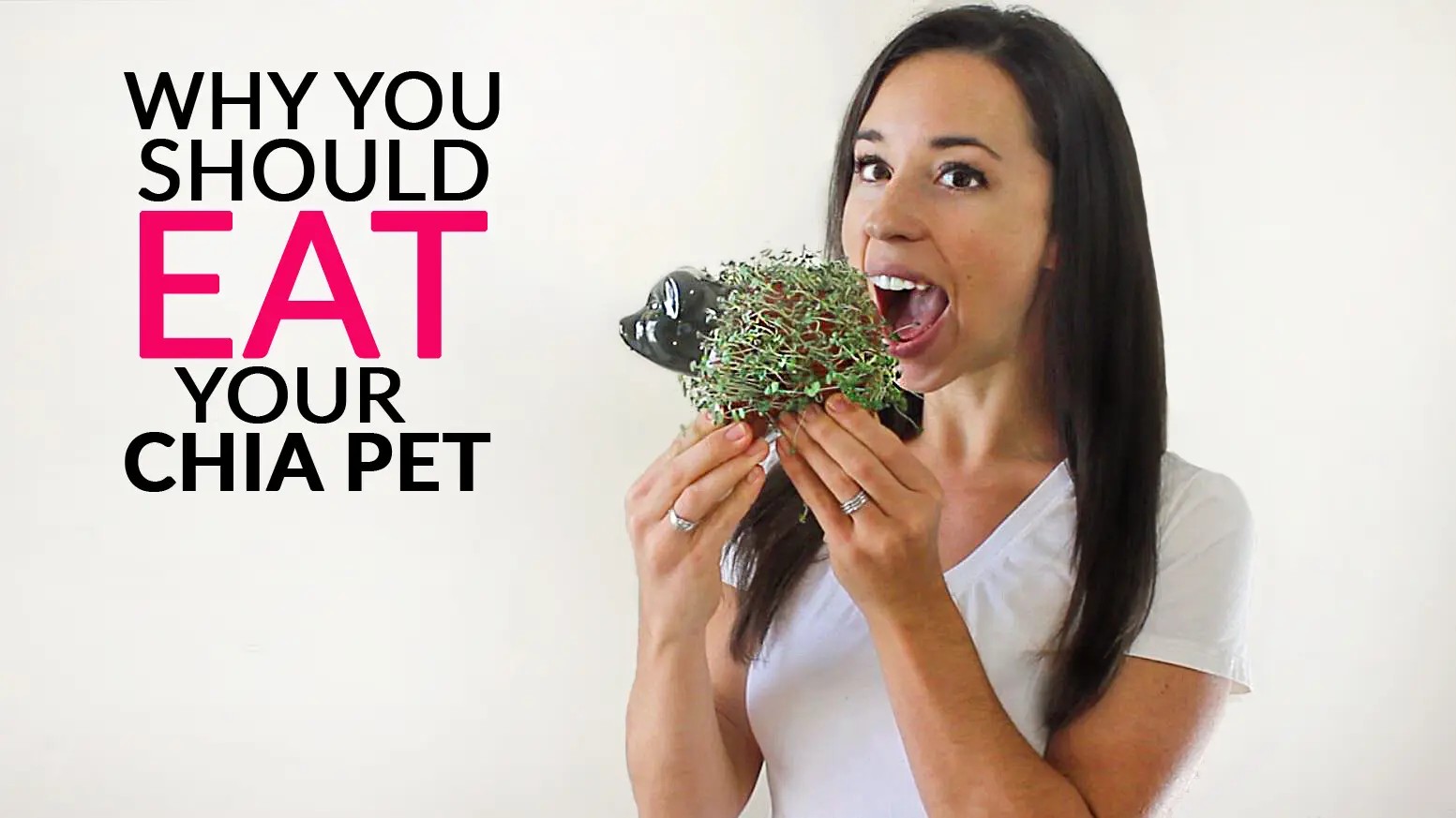Remember the catchy jingle from the 80s and 90s? “Ch-ch-ch-Chia!” Chia Pets, those whimsical pottery figures that sprout a verdant coat of “hair,” have been a beloved novelty item for generations. From elephants and trolls to cartoon characters like Mickey Mouse and Homer Simpson, these quirky pets bring a touch of green fun into homes. But beyond the nostalgia and catchy commercials, have you ever stopped to wonder, What Is A Chia Pet Made Of?
 why you should eat your chia pet
why you should eat your chia pet
The answer is simpler than you might think, and surprisingly, it involves ingredients that are not only fun but also boast some impressive health benefits. Let’s delve into the fascinating components that make up this iconic, sprout-growing figure.
The Pottery Base: Terra Cotta Explained
The foundation of every Chia Pet is the pottery figurine itself. This isn’t just any clay; it’s typically made from terra cotta. Terra cotta, meaning “baked earth” in Italian, is a type of earthenware clay that has been fired at a relatively low temperature, giving it a distinctive reddish-brown hue.
Terra cotta has been used for centuries in pottery and construction due to its porous nature and durability. Its porosity is key to the Chia Pet’s function. The slightly permeable surface allows the pottery to absorb and retain water, which is crucial for keeping the chia seeds moist and encouraging them to sprout. Think of terra cotta flower pots – they serve a similar purpose, providing a breathable and hydrating environment for plants to flourish.
The terra cotta base of a Chia Pet is designed with intricate grooves and patterns. These aren’t just for aesthetic appeal; they are strategically crafted to help the chia seeds adhere to the figure and create the desired “hair” or “fur” effect as they sprout. The shape and design of the terra cotta directly influence the final look of your Chia Pet’s sprouted masterpiece.
The “Hair”: Chia Seeds and Their Goodness
Now for the magic ingredient – the “hair” that brings your Chia Pet to life: chia seeds. These tiny seeds are the powerhouse behind the sprouting spectacle. Chia seeds are derived from the Salvia hispanica plant, native to central and southern Mexico. Historically, they were a staple food for ancient civilizations like the Aztecs and Mayans. In fact, “chia” is believed to mean “strength” in the Mayan language, and they were known as “runners’ food” for their energy-boosting properties.
But beyond their historical significance, chia seeds are nutritional powerhouses. They are naturally gluten-free and packed with nutrients, making them a popular superfood. Here’s a glimpse into their impressive profile:
- Rich in Fiber: Chia seeds are loaded with soluble fiber. This is why they swell and form a gel-like coating when soaked in water – a phenomenon you’ve likely witnessed if you’ve ever prepared a Chia Pet or made chia seed pudding. This high fiber content aids in digestion and promotes a feeling of fullness, which can be beneficial for weight management.
- Omega-3 Fatty Acids: Chia seeds are an excellent plant-based source of omega-3 fatty acids, essential fats known for their heart-health benefits, including reducing inflammation and regulating cholesterol levels.
- Protein Power: These tiny seeds contain a good amount of protein, contributing to muscle building and overall satiety.
- Vitamins and Minerals: Chia seeds are a good source of various vitamins and minerals, including calcium, phosphorus, manganese, and antioxidants.
The magic of Chia Pets lies in the chia seeds’ ability to sprout. When moistened, these seeds begin to germinate, sending out tiny roots and shoots. On a Chia Pet, this process transforms the bare terra cotta figure into a whimsical, verdant creation.
Sprouting Chia Pets and Edibility: A Word of Caution
The original article playfully suggests eating your Chia Pet sprouts, highlighting the nutritional benefits of chia seeds. And it’s true – chia sprouts are indeed edible and contain chlorophyll, a compound that gives plants their green color and is believed to have blood-cleansing properties.
However, it’s crucial to heed a significant warning mentioned in the original article: do not eat the seeds that come directly with a commercially purchased Chia Pet. The company that produces Chia Pets explicitly states that the seeds included with the pottery are not intended for consumption. These seeds are not cleaned to the same standards as food-grade chia seeds and do not undergo the same FDA compliance processes.
If you are interested in consuming chia sprouts, it is imperative to purchase food-grade chia seeds specifically sold for eating. These seeds are processed and cleaned to meet food safety standards. You can easily sprout these food-grade chia seeds at home using a terra cotta Chia Pet or other sprouting methods and then incorporate the sprouts into your diet.
To maximize the nutritional benefits of chia seeds (whether sprouted or not), soaking them before consumption is recommended. Like many seeds and grains, chia seeds contain phytates, which can hinder nutrient absorption. Soaking, sprouting, or fermenting them helps to reduce phytate content and makes the nutrients more bioavailable.
Conclusion: More Than Just a Novelty
So, to answer the question, “what is a Chia Pet made of?” – it’s crafted from simple yet ingenious materials: porous terra cotta pottery and nutrient-rich chia seeds. This combination allows for the delightful sprouting action that has captivated people for decades.
While the idea of eating your Chia Pet might be a fun novelty, remember to prioritize safety and use food-grade chia seeds if you intend to consume chia sprouts. Whether you enjoy them as a fun decorative item or explore the nutritional benefits of chia seeds and sprouts (using safe, food-grade seeds!), Chia Pets offer a fascinating glimpse into the power of nature and the simple magic of seeds and water. They are more than just a catchy jingle; they are a testament to the humble yet mighty chia seed and the absorbent nature of terra cotta.